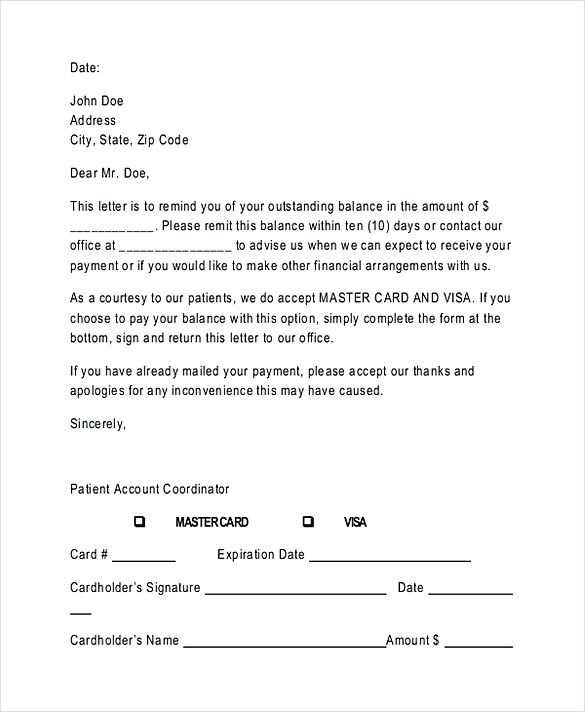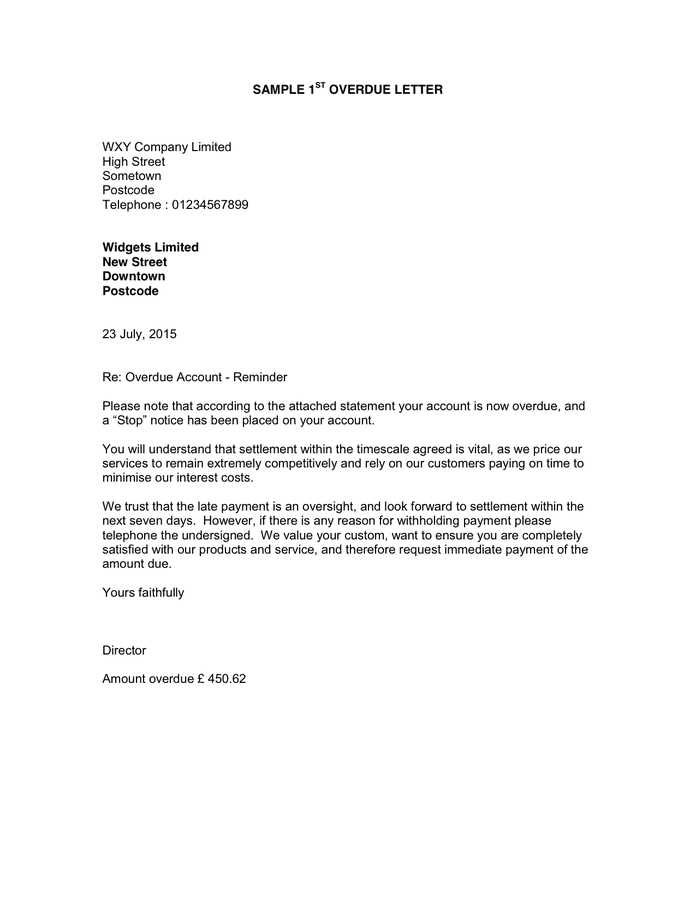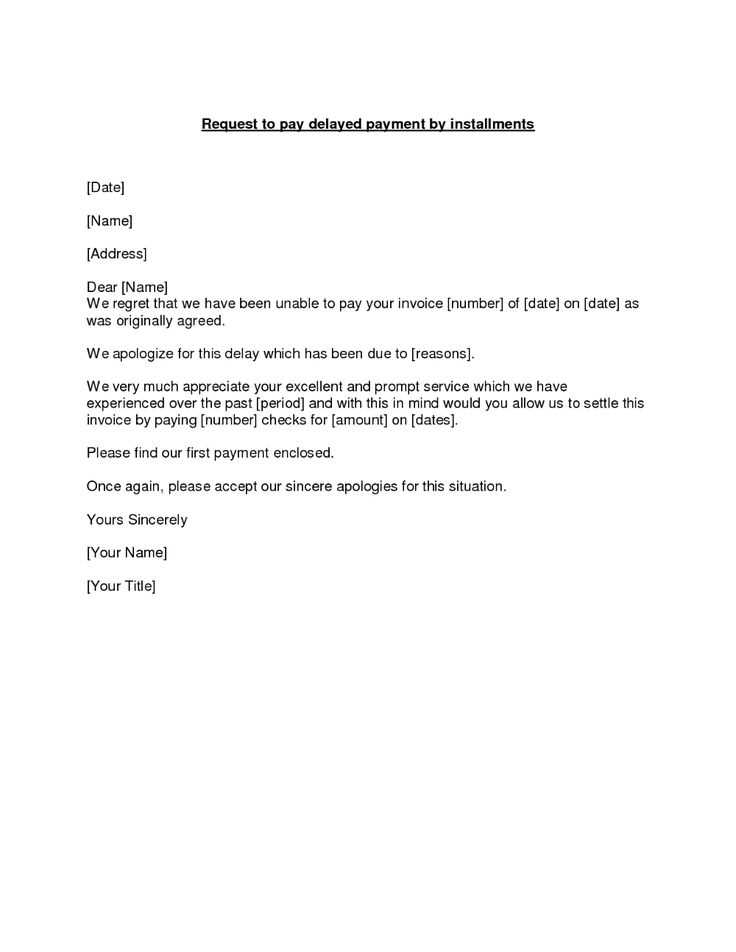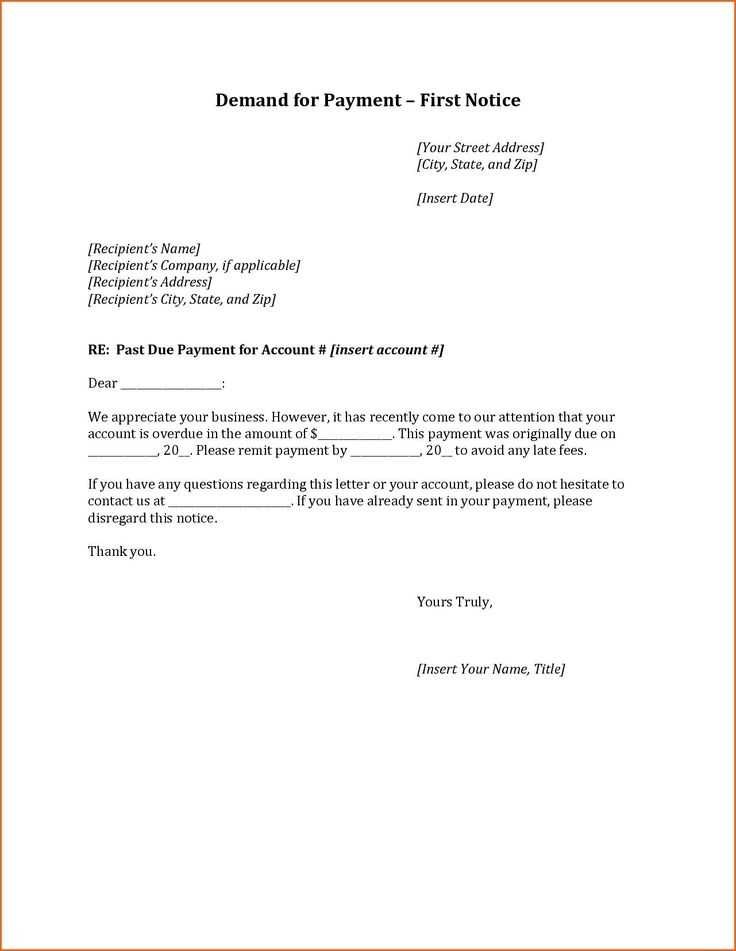Repayment of training costs letter template

To begin, make sure the letter clearly outlines the agreement regarding the repayment of training costs. State the amount owed, the specific training expenses involved, and any agreed-upon payment terms. It’s important to specify the dates by which payments must be made and the total repayment period.
Next, include a section detailing the reason for repayment, whether due to early termination of employment, failure to meet specific conditions, or another cause. Be clear, concise, and professional in explaining the context behind the repayment request.
Finally, provide clear instructions on how the repayment can be made, including payment methods and relevant account details. If the recipient needs any clarification, offer a way to reach out for further assistance. Make sure the tone remains respectful but firm to ensure compliance with the agreement.
Here’s the revised version with minimal word repetition:
To ensure clarity and professionalism in your repayment request, start with a clear explanation of the situation. Specify the training costs you are referring to, and outline your agreement or contract details where the repayment terms are mentioned. Highlight the reasons why repayment is necessary and provide a concrete timeline for repayment, including any flexibility if applicable. Be straightforward and direct without unnecessary elaboration. Offering a payment schedule can help set expectations and avoid misunderstandings. Be polite but firm, ensuring your position is clear without sounding demanding.
- Repayment of Training Costs Letter Template
If you need to draft a letter for the repayment of training costs, start by being clear and direct about the terms of the repayment. Address the recipient professionally, mention the specifics of the training costs, and outline the agreed repayment plan. Below is a template you can use as a reference:
Letter Template

Dear [Recipient’s Name],
I am writing to confirm my agreement to repay the training costs related to [Training Program Name] that were covered by [Company Name]. As per our agreement, the total cost of the training is [Total Amount], and I will repay this amount according to the following schedule:
Repayment Schedule:
- First payment: [Amount] due on [Date]
- Second payment: [Amount] due on [Date]
- Final payment: [Amount] due on [Date]
Please find my contact details below in case you need any further clarification:
[Your Name]
[Your Address]
[Your Contact Information]
Thank you for your understanding. I look forward to settling this matter promptly.
Sincerely,
[Your Name]
Begin with a clear subject line that states your request. Mention the training costs repayment explicitly, so the recipient knows the purpose of your letter right away. In the opening paragraph, introduce yourself and explain your position. Include relevant details such as your job title, the training program, and why it was necessary for your role. Make sure to state the specific amount you’re seeking reimbursement for.
In the next section, provide a brief overview of the training–dates, location, and content–and how it contributed to your professional development. Mention how the training aligns with the company’s goals or your current job responsibilities, showing the return on investment. Include any supporting documents like receipts or training completion certificates as proof of payment and participation.
Next, politely request the repayment, providing clear instructions on how you’d prefer to receive the payment (check, bank transfer, etc.). Mention any applicable company policies or agreements that support your request for reimbursement, if necessary. Be concise but thorough in stating why you believe repayment is justified.
End the letter by expressing appreciation for considering your request and mention your availability to discuss the matter further if needed. Close formally with a polite sign-off and your contact information.
To make your letter clear and professional, include these key components:
- Introduction and Purpose: Begin by stating the purpose of the letter clearly. Mention that it concerns the repayment of training costs as per the agreed-upon terms.
- Agreement Reference: Refer to any contract, agreement, or policy that outlines the repayment conditions, including dates and amounts.
- Training Details: Provide specifics about the training program, such as its name, duration, and costs, to ensure there is no confusion about what the payment covers.
- Repayment Terms: Clearly state the repayment schedule, including the amount due, the due dates, and the payment method.
- Consequences for Non-Repayment: If applicable, mention any penalties or actions that will occur if payments are missed, in accordance with the original agreement.
- Contact Information: Offer a way for the recipient to reach out if they have questions or need to discuss the matter further.
- Closing and Signature: Close the letter professionally with your name, position, and contact details for easy follow-up.
By including these elements, you’ll ensure that your letter is both clear and respectful, which will help in achieving a smooth resolution of the matter.
Ensure that the letter clearly outlines the terms agreed upon in the training contract or agreement. Specify the conditions under which the repayment of training costs is required, such as a specific time frame or the completion of the training program. Avoid ambiguity by stating the exact amount of training costs that need to be repaid and any payment deadlines.
Check if the training agreement includes any clauses related to repayment, and refer to these specific provisions in the letter. Be clear about the consequences if the repayment is not made, whether it’s legal action, additional charges, or other penalties. Additionally, ensure compliance with applicable laws and regulations that govern employment and training contracts in your jurisdiction. This may include specific limits on how much an employer can require an employee to repay for training.
Keep in mind that the repayment request must be fair and reasonable. If the training was not of significant benefit to the employee or if the contract terms were unclear, this could affect the enforceability of the repayment request. Be transparent about the legal basis for the claim and avoid any coercive language that could be seen as an unfair practice.
| Key Elements | Details |
|---|---|
| Agreement References | Explicitly refer to the relevant clauses of the training agreement that justify the repayment. |
| Repayment Amount | State the exact amount to be repaid, including any interest or penalties if applicable. |
| Repayment Timeline | Provide a clear deadline or schedule for repayment, as outlined in the agreement. |
| Legal Compliance | Ensure the letter complies with local laws governing training repayment and employment contracts. |
| Penalties | Outline any penalties for failure to repay, such as legal action or additional fees. |
Start with clarity. One common mistake is submitting a request with vague or incomplete details. Be specific about the training costs, including exact amounts, dates, and services provided. A clear breakdown ensures the employer or relevant authority understands the financial request.
Double-check the terms. Avoid assuming the repayment agreement is the same across all situations. Each company or organization might have different clauses regarding training repayment. Ensure your request aligns with the original contract or agreement terms.
Timing is key. Don’t wait too long to submit your request. Many companies have deadlines for reimbursement claims. Failing to meet those timelines could result in automatic denial of your request.
Attach all necessary documents. It’s common to overlook the importance of including supporting documents like invoices, training certificates, or proof of payments. Missing paperwork can delay or invalidate your claim.
Keep emotions in check. Stay professional and avoid including unnecessary personal feelings or frustrations in the request. A straightforward, well-organized letter is far more likely to receive a positive response.
Finally, double-check your grammar and formatting. Mistakes in spelling or punctuation can give the impression of carelessness, which may harm your credibility. A polished request shows professionalism and attention to detail.
To address non-payment in a training repayment letter, begin by referencing the original agreement. Clearly state the amount due and the payment deadline that has passed. Be direct and professional, but also polite. Mention any prior communications regarding the payment to highlight that the issue has been addressed before. Offer a clear call to action, such as requesting immediate payment or outlining the next steps if payment is not made within a set period.
Key Elements to Include:

| Element | Explanation |
|---|---|
| Reference to Agreement | Include details of the original training cost agreement, such as the date and the terms regarding repayment. |
| Outstanding Amount | Clearly state the amount owed, including any interest or late fees, if applicable. |
| Deadline | Specify the date by which the payment was originally due. |
| Call to Action | Encourage prompt payment or offer options for payment plans or extensions. |
Next Steps If Payment is Not Made

If the payment remains unpaid, indicate any legal or contractual actions that may follow, such as involving a collections agency or pursuing legal action. Make sure to mention that these actions are a last resort, and reaffirm your willingness to resolve the matter amicably if possible.
How to Personalize a Letter for Training Costs Repayment Based on Your Situation
To make your letter stand out, tailor it to reflect your specific situation. Start by addressing the person responsible for the repayment process, such as your manager, HR representative, or finance department. Clearly mention the training program you attended and specify the costs associated with it.
Here are key points to consider when personalizing your letter:
- Explain your situation: If your employer requires repayment due to specific terms (e.g., leaving the company early), outline the reason for your decision or change in circumstances. Be honest, but concise, and avoid unnecessary details.
- Highlight your commitment: If you completed the training with dedication or it contributed to your performance, mention it. For instance, “The training program significantly improved my productivity in the role, benefiting the company.” This helps justify the value you brought during your employment.
- Be clear about the repayment terms: Whether you’re negotiating or acknowledging your obligation, ensure you specify the repayment amount, payment schedule, or any flexibility you may be requesting.
- Express gratitude: Regardless of the circumstances, show appreciation for the opportunity to learn and grow through the training. This leaves a positive impression and can strengthen your relationship with the company.
- Follow company guidelines: If your company has a formal process for repayment letters, make sure to comply with their specific format and any required documentation. Adhering to protocol will streamline the process and demonstrate professionalism.
Keep the tone respectful and professional, as this helps facilitate a smoother conversation. If you have any concerns or need clarification, mention that you’re open to discussing the matter further with the relevant parties.
Repayment of Training Costs Letter Template
Keep your letter concise and clear. Specify the training expenses, including course fees, materials, and any additional costs incurred. Mention the repayment amount, outlining the agreed-upon terms such as deadlines, payment schedules, and preferred methods.
Key Elements to Include:
- Start with a formal greeting and acknowledge the reason for the repayment request.
- Detail the costs incurred, including invoices or receipts if available.
- Include the repayment amount due and any agreed-upon conditions.
- Clarify payment timelines and preferred payment methods.
- Provide contact information for follow-up or clarification.
Sample Structure:

- Begin by addressing the recipient formally, stating the reason for your letter.
- List the exact training costs, breaking them down if necessary.
- Explain the repayment terms, ensuring they match the prior agreement.
- Provide details on how the payments should be made, including bank account details or other payment methods.
- End with a polite closing and your contact information for further questions.
Always use a professional tone and provide clear, actionable information. If any payment terms change, make sure to update the recipient promptly.